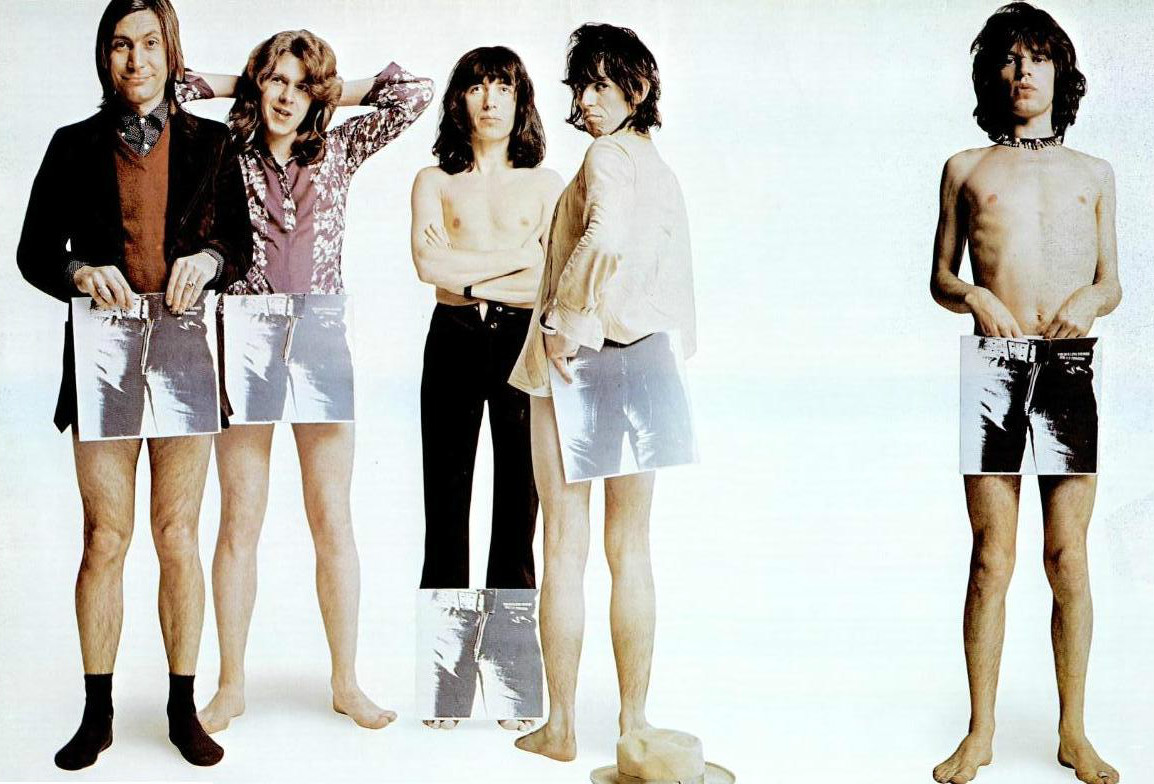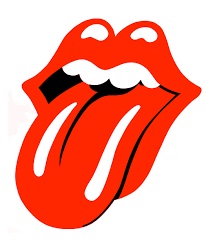
It was, without a doubt, the first album cover that had not only a close-up of a male crotch but also a working zipper. Above that, a belt buckle: flip it open and you caught a glimpse of a pair of white briefs, with a stamped credit on the left reading “Andy Warhol: THIS PHOTOGRAPH MAY NOT BE—ETC.”
It was, to be sure, a work of genius, and so was the music inside. Plunk the needle down on the vinyl and those first guitar chords—the opening of the Rolling Stones‘ “Brown Sugar”—rang out proudly and loudly. You’d never forget them for the rest of your life; on any list of the most iconic rock riffs ever, that one has to be near the top.
Sticky Fingers was just about as perfect as a rock album could be. It was released on this date, April 23, 1971, quickly rose to #1 and stayed there for four weeks in America, the first Stones album to do so since 1965’s Out of Our Heads (even 1969’s Let it Bleed had only made it to #3). Sticky Fingers was also #1 in the U.K., Australia, Canada, Spain, West Germany and several other countries. “Brown Sugar,” too, went to #1 in the U.S., one of the year’s most memorable hits.

Related: 1971 book makes a case for one of rock’s most exciting years
Sticky Fingers, in many ways, continued along the path of Let It Bleed, tough and rootsy, filled with classic Stones tracks like the driving “Bitch,” “Can’t You Hear Me Knocking” (which showed off the considerable talents of lead guitarist Mick Taylor, who had replaced the now-deceased Brian Jones in the band), the wistful ballad “Moonlight Mile,” and a couple of nods to Keith Richards’ increasing interest in country music (courtesy of his friend Gram Parsons of the Flying Burrito Brothers), “Dead Flowers” and “Wild Horses,” the latter one of the most beautiful ballads he and Mick Jagger had ever written. Rounding it out were the cautionary and creepy “Sister Morphine,” the swaggering “Sway,” and a couple of pure blues numbers, “I Got the Blues” and a cover of Mississippi Fred McDowell’s “You Gotta Move.”
The album, the first release on the group’s own Rolling Stones Records label (distributed by Atlantic Records), was produced by Jimmy Miller, who had previously performed the same task for the band’s 1968 Beggars Banquet and the following year’s Let It Bleed. Sessions began in Muscle Shoals, Alabama, in early December 1969 (just prior to the fateful Altamont concert) and continued in earnest in March 1970, primarily using the Stones’ mobile recording unit.
Guest artists contributing to the album included such heavy hitters as Nicky Hopkins, Ian Stewart and Billy Preston on keyboards, saxophonist Bobby Keys and guitar great Ry Cooder, playing the stark and eerie sounds on on “Sister Morphine.”
 Sticky Fingers also marked the debut appearance of perhaps the most famous logo in all of rock ’n’ roll, the “tongue and lips” design by John Pasche, created by the artist as a tribute to Jagger’s own rather pronounced mouth. It appeared on the album’s inner sleeve, above the song credits (with a portrait of the band on the other side) and in smaller form on the back cover (which was a rear view of the same male model’s lower torso). The logo has remained the symbol of all things Rolling Stones for the remainder of the band’s existence.
Sticky Fingers also marked the debut appearance of perhaps the most famous logo in all of rock ’n’ roll, the “tongue and lips” design by John Pasche, created by the artist as a tribute to Jagger’s own rather pronounced mouth. It appeared on the album’s inner sleeve, above the song credits (with a portrait of the band on the other side) and in smaller form on the back cover (which was a rear view of the same male model’s lower torso). The logo has remained the symbol of all things Rolling Stones for the remainder of the band’s existence.
Related: On the album’s anniversary in 2020, the Stones surprised their fans with a great, new song
Sticky Fingers gave notice that as big as the Stones had been in the ’60s, they were still just getting started. Their popularity would only increase during that decade (their 1972 American tour and followup release, Exile on Main Street, would lift them yet another notch) and guarantee they’d be able to stick around as long as they liked. More than four decades later, they still like.
Watch the Stones perform “Brown Sugar” on Top of the Pops in 1971
Related: The #1 albums of 1971
The Stones are touring again. Tickets are available here and here. The band’s recordings and other stuff are available in the U.S. here and in the U.K. here.


8 Comments
Still the best Stones lineup of all time. Mick Taylor was amazing here and on Exile.
Bought the 42 year anniversary box set which includes original album & 4 bonus discs
I remember a bunch of record dealers loved and hated this album: loved it because it was the Stones and it sold like crazy; hated it because a number of copies had to be returned because the zipper marred copies that were toward the bottom of the cartons while they were being shipped. Later copies either put an extra piece of cardboard under the zipper for protection or made it of cardboard and it was not a working zipper.
I wonder if that’s why so many LP copies of the album had skips in the same place – during the guitar solo that closes out “Bitch.” That was the first track on side 2, and thinking about it now, it was in the approximate place where the handle of the zipper would be pressing into the vinyl.
mine had the zipper- and it worked too! (i peeked… warhol, ya know…)
Other than owning the original 1971 LP with its real working zipper, I have also bought and kept sealed and well protected, the 2015 “Sticky Fingers” Limited Edition ( DBL album including a bonus record ). This collectable re-release still features the real working zipper, with one lovely exception : The metal pulling tab is now an actual replica of the traditional Rolling Stones “tongue” ! Cheers !
One of the greatest albums of all time. With Mick Taylor in the line-up, the Stones created a whole new dimension of Blues rock The followed up, Exile In Main St was great, but I actually like Goats Head Soup even better. The Mick Taylor years are definitely the Stones Golden Years. They were “The Greatest Rock n Roll Band” with Mick Taylor in the line-up.
Totally agree the Taylor years were the best although some of the early stuff was fantastic with Brian Jones. Nothing quite reaches the greatness of sticky fingers, exile, goats head soup, but I also wanna give a shout out to It’s only rock ‘n’ roll, which has some of their best songs, such as time waits for no one, and one of my favorites luxury